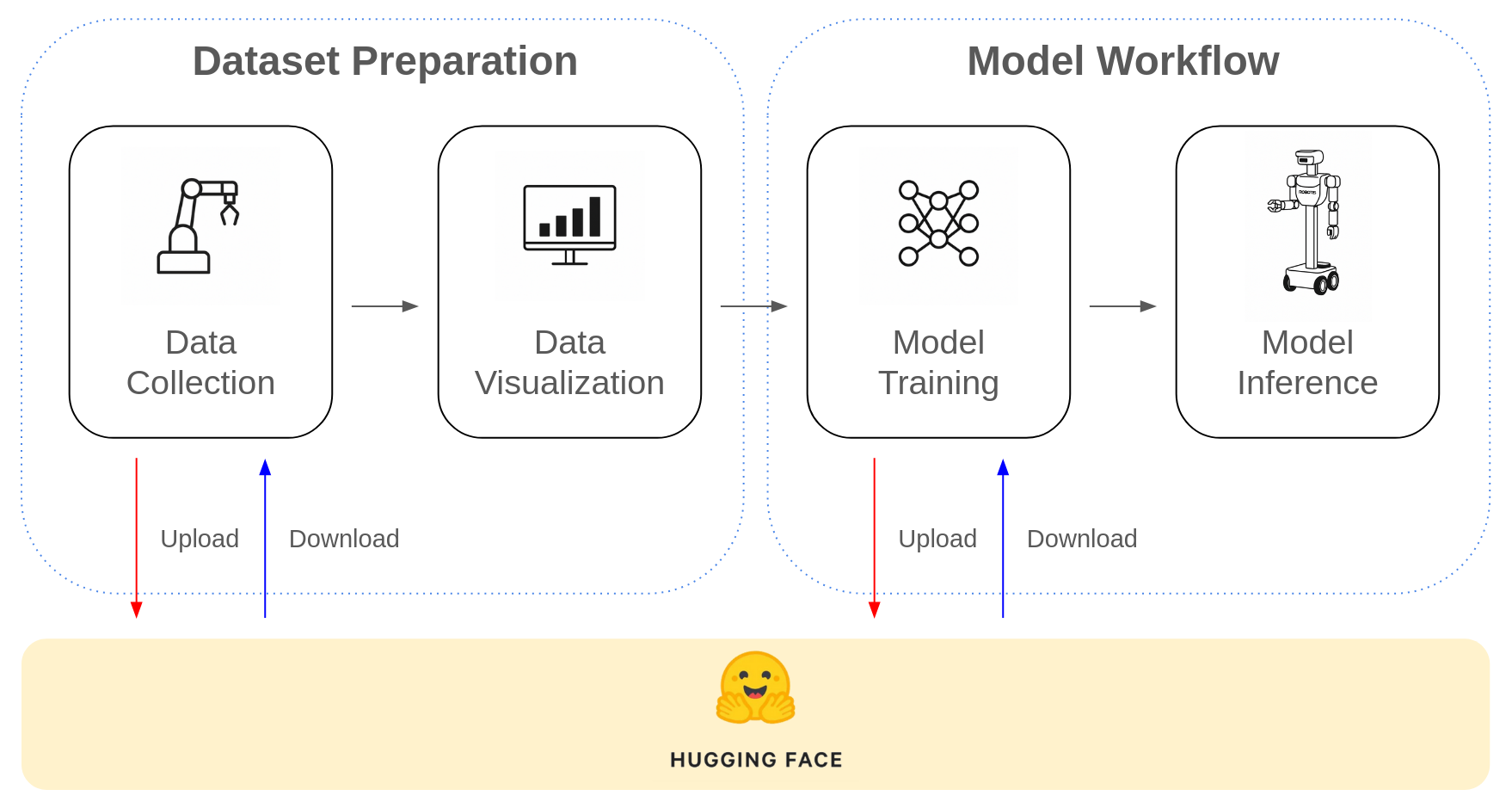Imitation Learning
Overview
This document provides an overview of the complete ROS 2-based imitation learning pipeline built on the OMX and the Hugging Face Hub. OMX offers two powerful approaches for imitation learning:
1. Data Collection
Human operators use a leader device to demonstrate motions, collecting image and joint position data. The collected data can be uploaded to and downloaded from the Hugging Face Hub.
2. Data Visualization
Collected data is visualized to inspect motion trajectories and images, helping to identify potential errors prior to training.
3. Model Training
The verified dataset is then used to train an action policy model. Training can be performed on local GPUs or on embedded platforms such as the NVIDIA Jetson. The resulting model can be uploaded to and downloaded from the Hugging Face Hub.
4. Model Inference
Once trained, the models are deployed on the OMX to execute real-time inference for tasks such as picking, placing
End-to-End Imitation Learning Workflow
- The diagram below shows the full imitation learning workflow using the OMX and Hugging Face.

Tutorial Videos: End-to-End Imitation Learning Workflow
The video illustrates the full imitation learning workflow using the OMX, including teleoperation, dataset creation, and real-time inference with a trained model:
- Full imitation learning workflow using OMX and the Physical AI tools (Web GUI).
- Full imitation learning workflow using OMX and the LeRobot CLI.
Dataset Schema
The dataset follows the standard 🤗 Hugging Face datasets format and contains imitation learning demonstrations collected from the OMX via ROS 2 teleoperation using the LeRobot framework.
| Field | Type | Description |
|---|---|---|
action | List[float32] | Leader state vector |
observation.state | List[float32] | Follower state vector |
observation.images.camera1 | Image | RGB image from the first wrist camera |
observation.images.camera2 | Image | RGB image from the second wrist camera |
timestamp | float32 | Time (in seconds) when the step was recorded |
frame_index | int64 | Index of the frame within an episode |
episode_index | int64 | Index of the episode |
index | int64 | Global index across the dataset |
task_index | int64 | Task identifier |